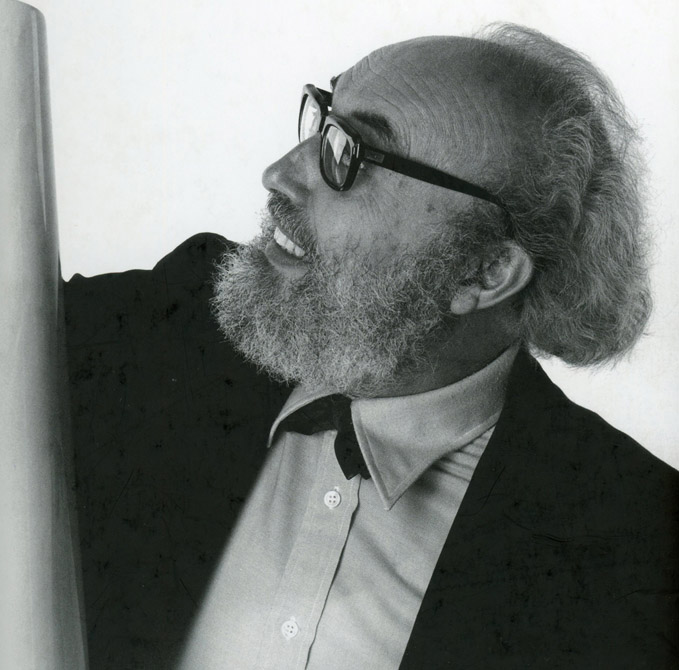Room 14
Invited by Alessandro Mendini
A few months after his death, Casa Testori pays tribute to Angelo Mangiarotti, a great architect and designer, one of the protagonists of the Milan School. It is a tribute intended to underline his design characteristics: a strong visionary drive combined with an almost artisanal knowledge of materials. Compared to the other exponents of the Milan School, Mangiarotti had a vocation for imagining and designing large infrastructures, as in fact was achieved with the stations of the Milan railway link. Many other ideas, however, have remained on paper, and he has left them to us, recounting them in dozens of studies and drawings that fully convey the fascination of his inventions. The Catania Stadium, which a group of builders commissioned him to build in view of the 1990 World Cup, is one of these inventions.
Mangiarotti, who is capable of drawing almost utopian forms from very everyday references, starts out from the shape of a creel, a cylindrical or spherical cage-shaped fishing tackle, to conceive the Stadium. In fact, the stadium seems to glide over the sheets of paper just like a spaceship. It is a single, compact volume, made up of a reticular structure of steel tubes with light, opaque and glazed infills. When the Beijing Olympic Stadium was inaugurated in 2008, designed by Herzog-De Meuron on a concept by Ai Weiwei (the famous “swallow’s nest”), many people called Mangiarotti to congratulate him because his futuristic idea of twenty years earlier had become reality.For the realisation of this room, the collaboration of Anna Mangiarotti and Kinue Horikawa was essential.
Angelo Mangiarotti was born in Milan in 1921. He died in Milan in 2012.





